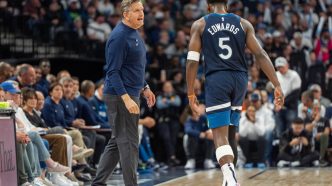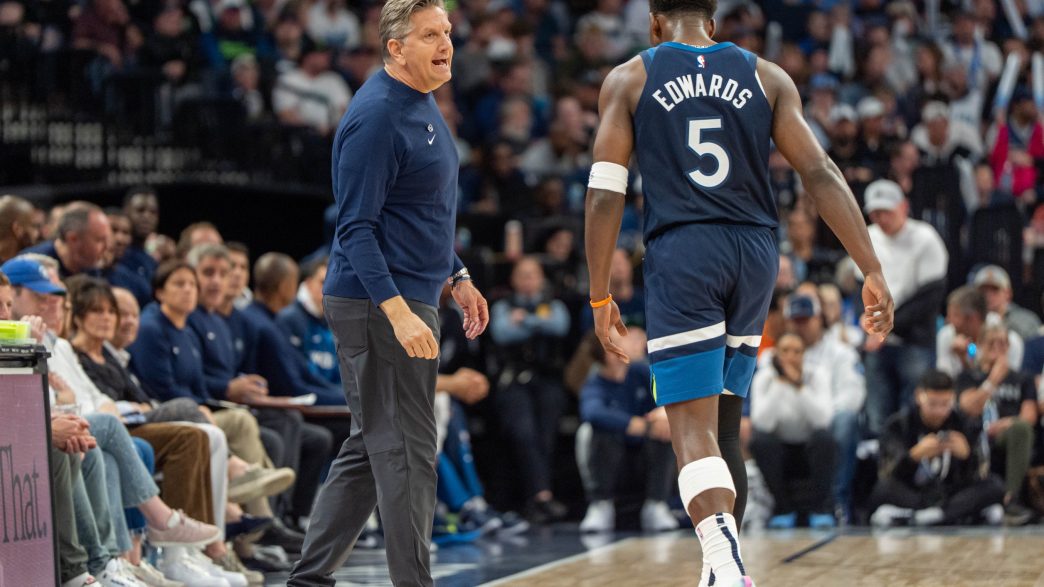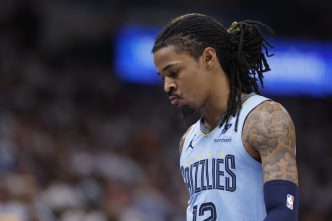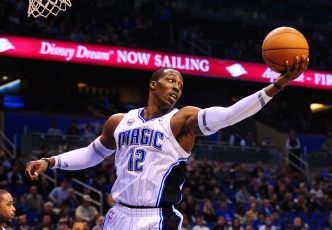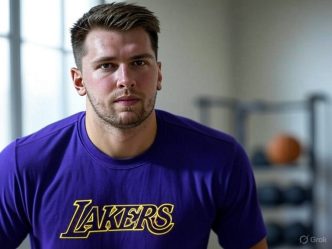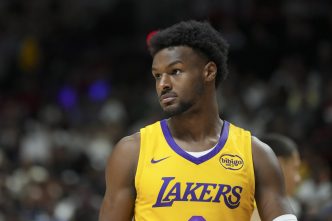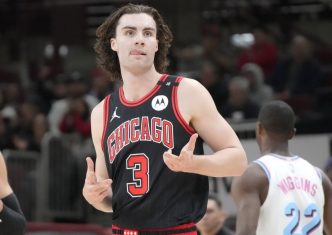The Minnesota Timberwolves squandered a prime chance to seize a 1-0 lead in their Western Conference semifinal series against the Golden State Warriors on May 6, 2025, falling 99-88 in Game 1 at Target Center. Fresh off a six-day rest after a 4-1 rout of the Lakers, the No. 6-seeded Timberwolves were poised to exploit a fatigued No. 7-seeded Warriors squad, who’d just endured a grueling seven-game series against Houston, wrapping up less than 48 hours prior. Instead, Minnesota delivered a flat performance, shooting a dismal 39.5% from the field and 5-for-29 (17.2%) from three, while being outrebounded 47-39 by a smaller Warriors team. The loss, exacerbated by Stephen Curry’s second-half absence due to a hamstring strain, has raised alarms about Minnesota’s offensive execution and Anthony Edwards’ leadership, as coach Chris Finch called out his star’s lackluster start. Let’s break down the Timberwolves’ shooting struggles, Edwards’ impact, and what they must fix for Game 2 on May 8.
Minnesota’s offensive collapse was stark, particularly from beyond the arc. The Timberwolves went 0-for-15 on threes in the first half, trailing 44-31 at the break, and finished 5-for-29, with Edwards (1-for-6) and Julius Randle (0-for-4) among the culprits, per NBA.com box scores. Their 12-for-76 three-point shooting (15.8%) over their last two games, including the Lakers closeout, is the worst two-game stretch in NBA playoff history (minimum 50 attempts), per ESPN Research. This is a sharp drop from their regular-season form, where they ranked 4th in three-point percentage (38.7%) and 5th in threes made (12.6 per game). The Warriors’ defense, led by Draymond Green and Gary Payton II, disrupted Minnesota’s rhythm, using zone schemes and late help to clog Edwards’ drives, forcing 15 unforced errors, per X posts. Minnesota’s 92.4 points per 100 possessions in the half-court against Golden State this season (27th in efficiency) underscores their struggle against Green’s schemes.
Edwards, the Timberwolves’ cornerstone, had a night to forget early. Scoring just one point (a free throw) in the first half on 1-for-8 shooting, he failed to set the tone, managing only two assists and no steals, a far cry from his 28.6 points and 3.4 assists per game against the Lakers, per NBA.com. Finch’s postgame critique was blunt: “You’re the leader of the team and you’ve gotta come out and set the tone… If I’ve got to talk to guys about having the right energy coming into an opening second-round game, then we’re not on the same page”. Edwards rallied for 23 points (9-for-22) and 14 rebounds, including 13 in the fourth, but a critical defensive lapse—leaving Buddy Hield open for a dagger three with 2:42 left—sealed Minnesota’s fate. Edwards admitted to ESPN his offense “could’ve been better” but felt his defense was solid, despite Hield’s 24 points (5-for-8 from three) and a +22 rating.
Curry’s exit at halftime, after scoring eight points in 13 minutes, handed Minnesota a golden opportunity. The Warriors, up 30-20 when Curry left with a left hamstring strain (day-to-day, unlikely for Game 2, per Steve Kerr), leaned on Hield, Jimmy Butler (20 points, 10 rebounds), and Green (18 points, 4-for-6 from three) to maintain a double-digit lead. Minnesota’s inability to capitalize—shooting 3-for-16 in the third and committing seven turnovers—exposed their lack of urgency. The Warriors’ 17-0 run in the second quarter, sparked by Green’s four first-half threes, ballooned the lead to 33-22, and Minnesota never got closer than nine points in the fourth, per FOX Sports play-by-play.
The Timberwolves’ shooting woes aren’t new. Their 15.8% three-point clip against the Lakers in Game 5 (7-for-47) carried over, with Randle (22.6 points, 39.3% from three vs. Lakers) and Donte DiVincenzo (36.4% from three in 2024) going cold. Jaden McDaniels, who averaged 17.4 points in the first round, shot 2-for-7 (0-for-3 from three) for six points, and Rudy Gobert’s eight points and 12 rebounds couldn’t offset his 1-for-4 free-throw shooting. Minnesota’s 31% offensive rebounding rate with Gobert on the floor, a top-five mark, generated second-chance points (14), but their 29-47 rebounding deficit to Golden State’s smaller lineup—despite Kevon Looney’s limited 12 minutes—highlighted hustle issues.
Game 2 is pivotal. Without Curry, Golden State’s offense, which shot 42.9% from three (12-for-28) in Game 1, relies on Hield’s 14 threes over two games and Butler’s 26-8 record when he and Green play with Curry. Minnesota’s defense, 6th in regular-season rating (108.4), must tighten, as their 1-3 regular-season record against Golden State (107.8 points scored, 108.3 allowed) shows a tight matchup. Edwards, who averaged 28.8 points against Curry’s primary defender, McDaniels, needs to attack early, leveraging his 49.1% field goal percentage vs. Golden State. Randle’s 48.1% shooting and Gobert’s 24 rebounds in Game 5 vs. the Lakers must translate, and shooters like DiVincenzo (1-for-5 from three) and Mike Conley (0-for-3) need to snap their 12-for-76 slump.
Minnesota’s advantages—size, depth, and rest—remain. Their 49-33 regular season edged Golden State’s 48-34, with better offensive (8th vs. 15th) and defensive (6th vs. 7th) ratings. Edwards, at 23, is the series’ best player, per NBC Sports’ Kurt Helin, and their 40.0 points per 100 possessions fourth-quarter edge vs. the Lakers shows clutch potential. But their 39.5% field goal percentage and 29-2 first-half rebounding deficit in Game 1 scream for urgency. Finch’s call for Edwards to “carry the energy” echoes X sentiment that his early struggles dimmed the team’s light. If Minnesota repeats their 0-for-16 three-point start or 15 turnovers, Hield and Butler could steal another road game, even without Curry.
The Timberwolves can rebound. Their 17-4 regular-season close and 4-1 Lakers upset prove their mettle. Edwards’ 14 rebounds and late surge show his fight, and Gobert’s rim protection (2.1 blocks per game in 2024) can deter Golden State’s 16th-ranked rim attempts. Adjusting to the Warriors’ zone, as Edwards did vs. the Lakers, and hitting open threes—Minnesota’s 38.7% regular-season mark suggests regression to the mean—could flip the script. Game 2’s 8:30 p.m. ET tipoff on TNT is a must-win. If Edwards drops 30 and the Wolves shoot 35% from three, they can tie the series. If not, Golden State’s 26-8 record with Butler, Green, and Curry (or Hield in his place) could push Minnesota to the brink. Time to wake up, Wolves—Game 2’s the real test.

